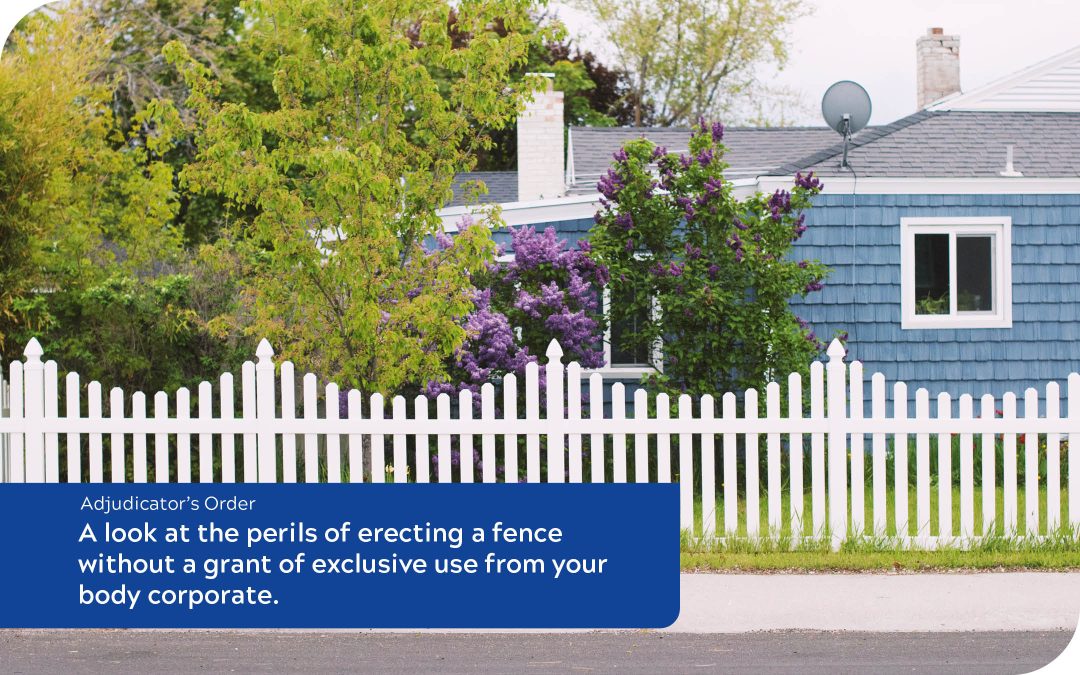When a unit or townhouse Building Format Plan complex is being planned and well prior to building commencing, the relevant Council, the developer and the developer’s town planner consider how to deal with land adjacent to each unit and how connecting that land or piece of common property to each unit might work.
There are two choices in Queensland – one choice is to attach the land to the lot by putting it on the Lot’s title.
The second choice is to provide a lot the “Exclusive Use” of a specific area of the common property (for example a car park or storage area or a courtyard attached to the lot) The exclusive use of that area is then noted in the community management statement as a by-law and on an exclusive use survey plan.
Given the above, it is not uncommon for owners to expect that land located immediately adjacent to their unit which may be fenced is owned by them and is not a part of the body corporate’s common property and therefore owned by all owners.
In a recent case in the Body Corporate Commissioner’s Office, an owner built a fence around land immediately adjacent to his ground floor unit which included a gate which was padlocked.
When another owner challenged the Respondent owner (an elderly resident) on her decision to annex that part of the common property for his use – she advised:
- At the time that the owner purchased her unit – the land area around her unit was fenced;
- The ground floor area behind the lot could not be used by other residents without disturbing the Respondent’s peace and quiet;
- That she needed the security of a locked and fenced area around her unit given her age; and
- That she paid “full market rate” for the unit when she purchased it so she should not have to pay for it again; and
- That she did not seek the Committee’s agreement to using the common property as they would have voted no and she would not have received a resolution without dissent so it was pointless to ask.
Unsurprisingly the fellow owner was not satisfied with the Respondent’s decision to fence a portion of the common property and the matter went before Adjudicator Miskinis.
The Adjudicator ordered the Respondent to remove the fence and gate from her property.
In reaching that decision, the Adjudicator found:
- The area surrounding the Respondent’s lot was common property;
- The Respondent’s lawyers confirmed the area was not her exclusive use at the time of her purchase;
- That by building a fence around that area, the Respondent had attempted to annex a portion of the common property for herself;
- That the Respondent had not received a grant of exclusive use from the body corporate to annex that land to her unit;
- Even if the Respondent was granted approval to install a fence and padlocked gate – without exclusive use enshrined in the scheme’s community management statement the Respondent’s use would still be unlawful;
- The Respondent did not purchase exclusive use rights over the common property when she bought her unit.
No doubt this would have been a tough decision for the Respondent to swallow given she paid for the fences to be built and then had to pay to have them removed. If you wish to read the case, you can access it here: http://classic.austlii.edu.au/au/cases/qld/QBCCMCmr/2023/379.html
